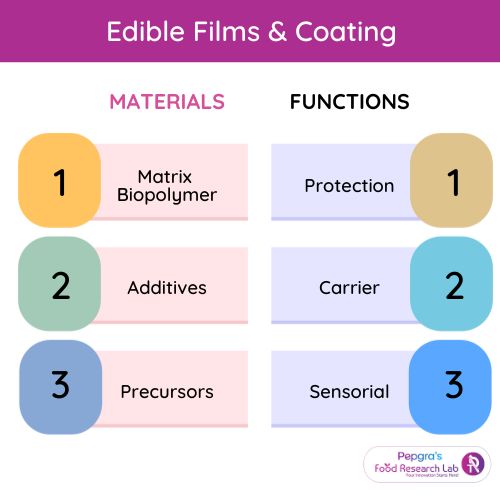
Edible Films and Coating
Food preservation technologies are currently facing important challenges at extending the shelf-life of perishable food products that help to meet the daily nutrient requirement demand. Furthermore, food preservation has progressed beyond simple preservation; modern procedures are aimed at achieving two additional goals: the appropriateness of the technologies utilised and the creation of ecologically friendly goods with no adverse health effects. They’re also on the lookout for extra nutritional benefits. The employment of edible films and coatings is one of these preservation methods.
Any substance with a thickness of less than 0.3 mm that is formed from a combination of biopolymers and other additives dispersed in aqueous media is considered an edible film or coating. Some authors use the phrases edible film and coating interchangeably, while others believe there is a distinction due to the inclusion processes into the food product.The edible coating is applied immediately to the food, whereas the edible film is prepared first and then applied to the product. Despite this, rigid matrices with similar properties are created in both circumstances.


Fig.1. Edible Films and Coatings Functionalization (MDPI.com)
The selection of ingredients is one of the most crucial aspects of making edible films. Polysaccharide-based edible coatings and films, a type of natural macromolecule with a high bioactivity, are often generated from agricultural feedstock or crustacean shell waste. Because of their great selective permeability to oxygen and carbon dioxide, polysaccharides have mostly been employed for food wrapping. These low-cost films are mostly prepared with cellulose and its derivatives such as ethers and esters, starch, pectins, and gums which are of applications in food preservation. Fresh fruit products such as tomatoes, cherries, fresh beans, strawberries, mangoes, and bananas have all been coated with cellulose-based edible coatings to prevent quality loss. Chitosan is a polysaccharide that is commonly used to prevent post-harvest deterioration in fresh fruits and vegetables. Chitosan is made up of chitin, which is found right next to cellulose.





